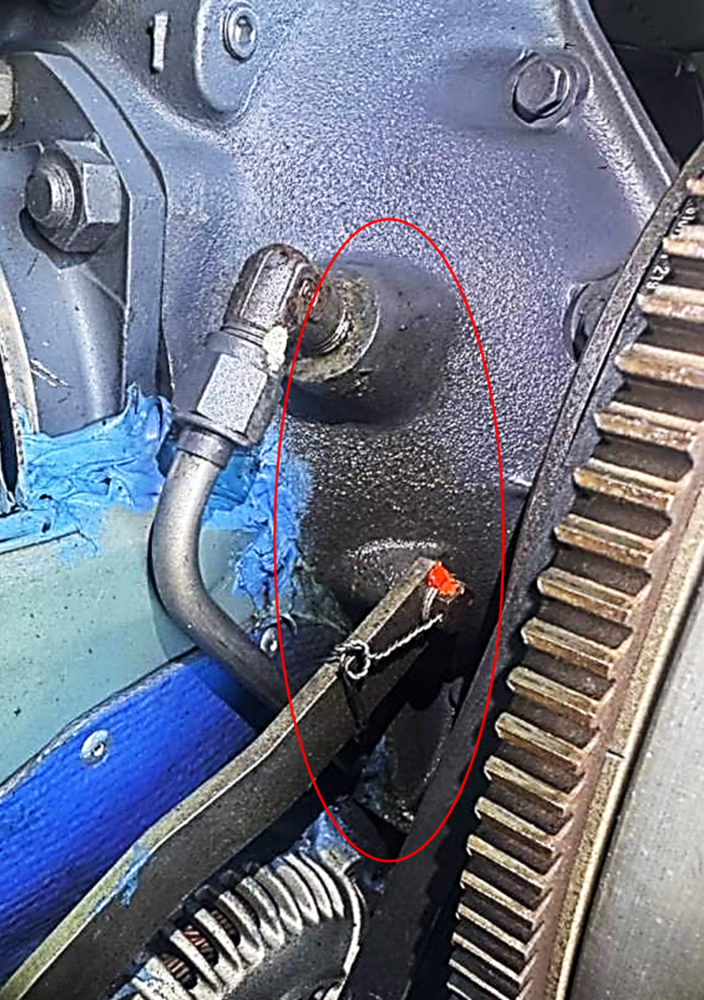All Activity
- Past hour
-
I agree with Ross @Shadrach. My 1978 J had one; my 1994 J does not. If I don’t get a greaser landing, the pitch down when the mains touch can bang the nose wheel down. It was much softer on the 1978 with the shock.
-
Good idea to remove it. It’s questionable to modify the wiring for the factory gauge if it is still the primary indication.
- Today
-
Diagnose my first oil leak after recent overhaul...
Fritz1 replied to DXB's topic in General Mooney Talk
Clean thoroughly with mineral spirits, spray with dye penetrant developer, run engine to get 150 dF oil temp, shut down and look for oil trail -
Acclaim N562BG on Controller, Prebuy Inspection
hammdo replied to Firehawk335's topic in General Mooney Talk
https://asn.flightsafety.org/wikibase/287250 -
Flew to Indy with my wife on Friday. Winds were benign. At 7500 with max MP and 2500rpm at 10gph groundspeed was 150knots. I am very impressed with some of your planes ability to achieve speed numbers LOP. My plane runs very cool (290-330 on cylinder temps), BUT starts stumbling below 9gph. Return trip this afternoon had turbulance at 6500 with a weird almost invisible layer that forced my higher. Wind was gusting from south and could not get over 145knots on return. Return flight took ten more minutes. I'm good with that. Andre, your 914 is beautiful. Love the paint. I was at a local chapter Pcar event and a member had heavily modded his 914 (spending over six figures!). It had Martini Racing colors. He also put a 911 type six gauge set up that was painted blue of exterior on the surround. A gorgeous example. He also has a 356 Super.
-

NEW NEWS FROM LASAR AND MOONEY AS OF 10/2/2025
Hank replied to cliffy's topic in General Mooney Talk
That's a lot easier than buying the whole turbine to begin with, isn't it? -
Acclaim N562BG on Controller, Prebuy Inspection
Fritz1 replied to Firehawk335's topic in General Mooney Talk
Brian is worth every penny! - Yesterday
-
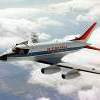
Hartzell spinner Assy, needs repair - 1967 M20F
Igor_U replied to Igor_U's topic in Avionics / Parts Classifieds
Bump -
NEW NEWS FROM LASAR AND MOONEY AS OF 10/2/2025
IvanP replied to cliffy's topic in General Mooney Talk
That is easy...just write a big check. We are complaining about part costs...how about replacing hot section of turbine -
I had a contract on N562BG located in California. Sounded like a good deal. I had Brian Kendrick do a very detailed Prebuy inspection. Cost me $5000, if you are considering this airplane, contact me.
-
Taylor 203 joined the community
-
I removed the shock from my F model when I received a new nose truss from LASAR that did not have the upper boss for the shock. Maybe it served no useful purpose according to Mooney, but it definitely dampened the rebound in the nose gear suspension. I have a parking pad for the nose gear that essentially has two rounded chocks for parking locators. The nose gear suspension behaves completely differently on the rebound going over those chocks without the shock. Maybe it doesn’t matter, but it’s way less refined then it was with the shock. My shock is still flying on the nose of a C model near Stuttgart. The owner is based on grass and prefers the dampened nose gear on turf.
-
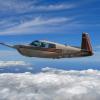
IO-360 ‘warm engine’ start on M20J
Beard replied to Tiny18Driver's topic in Modern Mooney Discussion
I do similar to MikeOH on a hot start. I pull the mixture at 1,000 RPM to shut down and when I restart I slowly push the mixture in (without touching the throttle) while cranking. It typically catches when the mixture is the richest. The is a Youtube video demonstrating this. -
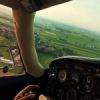
Diagnose my first oil leak after recent overhaul...
DXB replied to DXB's topic in General Mooney Talk
Try this one - cropped a bit, adjusted contrast, circled with red oval. You'll have to take my word for it that it is the only oil to be found on the engine or anywhere under the cowl. -
takair started following Diagnose my first oil leak after recent overhaul...
-
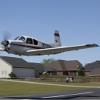
Diagnose my first oil leak after recent overhaul...
takair replied to DXB's topic in General Mooney Talk
What 47U suggested. See if the inside of the flywheel has a slime of oil in there. I had this happen after overhaul, in my situation it would occur every 30 hours…..it takes that long to build up enough to splatter. -
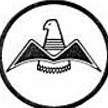
Diagnose my first oil leak after recent overhaul...
Shadrach replied to DXB's topic in General Mooney Talk
Well, if you can’t see where it’s coming from the only thing you can do is clean everything up and wait for a clearer (dirtier) picture to emerge. -

NEW NEWS FROM LASAR AND MOONEY AS OF 10/2/2025
LANCECASPER replied to cliffy's topic in General Mooney Talk
There are a lot of salvage Mooneys for donor parts - crashed airplanes and neglected airplanes. -
NEW NEWS FROM LASAR AND MOONEY AS OF 10/2/2025
Sabremech replied to cliffy's topic in General Mooney Talk
Once $28K came from ABS. The other $500K came from an estate specifically for overcoming the ruddervator skin issue. Maybe we need to form the American Mooney Society and as a group of owners and maintainers tackle our most pressing problems. Have the AMS work the parts that are needed and not available at true cost to the members. It could be setup as a not for profit entity for the benefit of its members. @cliffy Care to try something different than the promises generated by AI from LASAR? -

Diagnose my first oil leak after recent overhaul...
DXB replied to DXB's topic in General Mooney Talk
Prop was IRANd 140 hrs ago, same time as engine overhaul. Back of blades appear immaculate. -

Diagnose my first oil leak after recent overhaul...
Bartman replied to DXB's topic in General Mooney Talk
Mine leaked there after a few hours on my overhauled engine. The pipe threads were not very tight. A bit of sealant fixed it. I think it was just a small drop of Permatex Aviation. Mine did not spray, but it is always possible to have two leaks. -
I don’t blame you for getting the new alternator and you get a new bracket. That being said, when I installed my engine I ran a new field wire and coiled up a few inches of extra wire. The terminal at the alternator is prone to breaking due to vibration. I change the terminal every few years. Also like Yetti, my local alternator shop checked and cleaned my tractor alternator a few years ago.
-

Diagnose my first oil leak after recent overhaul...
Shadrach replied to DXB's topic in General Mooney Talk
When was the prop overhauled? Do you see any oil on the face (backside) of the prop blades? It’s hard to diagnose oil leaks online, but if I had to bet it would be on a blob of grease coming from the prop. Does not mean that the seals are herniated. Occasionally a prop hub will throw a little grease. It can atomize in the prop wash. -
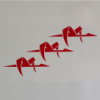
Diagnose my first oil leak after recent overhaul...
47U replied to DXB's topic in General Mooney Talk
Without an obvious leak after visual inspection, the crankshaft seal is the first place I would investigate. It’s hard to see, but run a clean paper towel underneath the crankshaft on the backside of the starter ring gear. If that’s clean, maybe pull the spinner and see if there’s any evidence of the prop leaking. The prop governor oil line fitting might be leaking a little, but I don’t think it’s the source of your spritz. Years ago, I had the same spritz on my C model (narrow deck) under the same flight conditions. It was the crankshaft seal. (The safety wire on the alternator support arm looks to be neutral… could be parallax in the view… ummm, I apologize for mentioning it.) -
Diagnose my first oil leak after recent overhaul...
Jsno replied to DXB's topic in General Mooney Talk
I would need to see another picture. This one shows nothing. -
NickM20F started following Diagnose my first oil leak after recent overhaul...
-
I’m requesting a little diagnostic input on the first oil leak to arise on my engine post overhaul. It is at 140 hrs and just under 11 months SMOH and has functioned flawlessly so far. Today, when I reduced power to idle just before landing, I got a sudden little spritz of oil mist on the middle of the windscreen. Upon landing, I noted a tiny bit of oil running back along the front of the top cowl. Upon examining carefully under the cowl, it appeared immaculate – no oil to be seen (so it must not be a big leak). The only exception is in the picture attached. There is oil that appears to be running down from the fitting connecting the prop governor oil line to the right front of the case. This is a strip of oil from the fitting down the right front side (pic attached). I don’t see oil anywhere else. Can one be confident the leak is from this fitting? If that’s the case, I’m a bit surprised there’s no oil blowing back across the base of cylinder #1. What is the best course of action here? I also wondered if the leak might be from the front crankshaft seal, but I would expect oil on both sides of the engine in that were the case.
-
So none of that demonstrates your ability to draw pictures in the sky.



